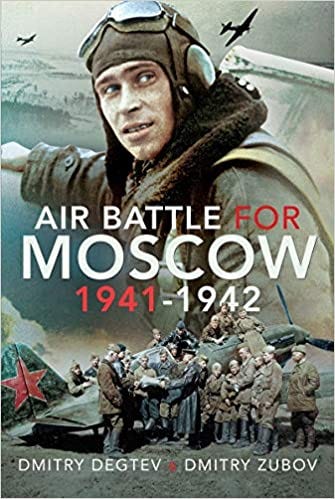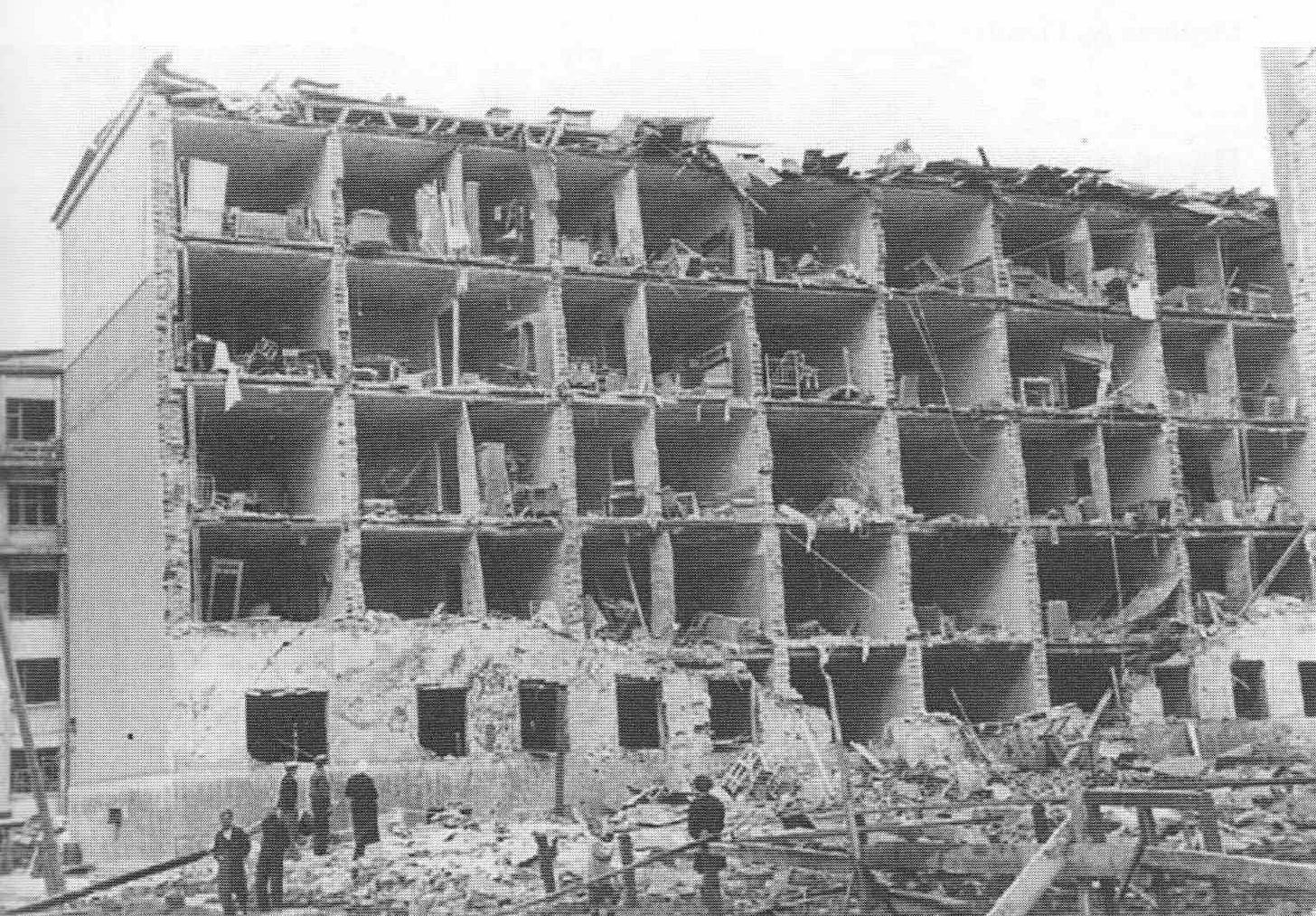Air Battle for Moscow 1941-1942
Panic in Moscow as the Germans approach - A Russian study which makes extensive use of Soviet contemporary records to create a detailed record of the air war over Moscow and the impact on the city
Russian researcher Dmitry Degtev has written twenty nine books about the Second World War. Only two of them are available in English, a third, Air Battle for Moscow 1941-1942, is published on the 31st October 2021 in the UK. Judging by this volume we can expect more of Degtev’s work to appear in English.
This is a very thoroughly researched study, using extensive use of the Central Archives of the Ministry of Defence of the Russian Federation. The basis of the book is therefore a mass of material that is not available to English language researchers. Where possible facts have been cross checked against published German records and accounts. The result is a blow by blow account told with considerable detail regarding the number of sorties flown, the losses on each day and the damage on the ground.
The air war is placed in the context of the wider war and events in Soviet Russia, as the the following passage illustrates. In many ways these narratives, with tantalisingly brief accounts of events, raise even more questions about the conduct of the war inside Soviet Russia. Nevertheless we get a very interesting perspective not available from other sources.
Once again a deeply researched book presented without maps, which would make it more intelligible to western readers. But it has a good range of mainly Soviet photographs and illustrations, most of them new to me. The translation is somewhat literal but it is no bar to understanding.
So a very valuable addition to the literature of the Eastern front, providing much new material from the Russian perspective.
‘The radio and the newspapers said Hitler had run out of men and that the troops advancing on Moscow were cripples, mental patients, degenerates and alcoholics. But the people no longer believed the propaganda.’
In mid-October, Stalin’s propaganda continued to zombify the population in the spirit of ‘all is well’ and ‘victory will be ours’. The radio and the newspapers said Hitler had run out of men and that the troops advancing on Moscow were cripples, mental patients, degenerates and alcoholics. But the people no longer believed the propaganda.
On 16 October, anti- Soviet protests and mass riots broke out in Moscow. After learning that the front had collapsed again and that German tanks were approaching the city, thousands of people decided that the dictatorship of the Bolsheviks and Stalin was over. Some rushed to loot shops, others to flee the city.
...
‘Yes, October 16 will go down as the most shameful date, the date of cowardice, confusion and betrayal in the history of Moscow. The people who were first to shout about heroism, resilience, duty, honour were the first to flee the city.’
That night mass riots broke out in the streets of Moscow. People broke shop windows, broke down doors and emptied out the shops. There were many gangs of looters. In Moscow, the trams, trolleybuses and metro stopped. The journalist N.K. Verbitsky wrote in his diary: ‘Yes, October 16 will go down as the most shameful date, the date of cowardice, confusion and betrayal in the history of Moscow. The people who were first to shout about heroism, resilience, duty, honour were the first to flee the city.’
The panic was fuelled by the ‘news’ that the Germans had already entered the city and were heading for the Kremlin. Thinking that this was the end of Stalin, people surged into the streets with renewed vigour.
A worker at one of the Moscow factories recalled:
Germans in Moscow? What to do? I decided to go to my father and ask him. My father worked at the headquarters of air defence of the Northern railway, which was located in Kalanchevke, he lived in barracks. I went to him on tram number 32, in order to find out what to do. Broken windows, robberies and fun. I saw how people carried on shoulders not only bags, but also whole hams, saw the women holding [...] sausage circles [over their heads]. Working people robbed and had fun, as if they were not in danger.
While some people were looting and waiting for the Germans, thousands of people fled to the east towards Gorky in cars and carts and on bicycles.
[Order was restored by NKVD troops by the end of the month, with a number of executions.]
...
At this time, the victorious attitude of the German command was quickly replaced by the understanding that ‘the Russians do not give up’. ‘There are no signs of the enemy’s withdrawal . . . the enemy still puts up strong resistance ... it should be expected that the enemy, who will also be able to use in defence the numerous rivers flowing across the path of the offensive, will continue persistent resistance’, read the OKH operational summary on 18 October.
Furthermore, the report of the Fourth Army first noted ‘the active operations of enemy aircraft that attacked the marching columns and command posts’.
After gathering all available forces (the rear-echelon units, military schools, regiments of people’s militia (the Russian ‘Home Guard’), the Soviet high command were able to create a new line of defence on the approaches to Moscow. At this time, the German tanks were stuck in the mud and left without fuel.
Only the Nazi newspaper the Volkischer Beobachter continued the optimistic trend set by the Fuhrer. ‘The whole world has already realized that in this operation the last fully combat-ready Bolshevik troops —Tymoshenko’s army group —were destroyed, and thus the fate ofthe Eastern campaign was decided.’
On the morning of 21 October the weather in the Moscow area was ‘normal’: 10 points of cloud and periodic rain. In such conditions, even taking off was difficult and dangerous. But the Germans had captured the airfield at Seschinskaya, a Russian long-range bomber base. It had a concrete runway, unaffected by the ‘Russian thaw’.
At lunchtime the bombers of KGr. 100 ‘Wiking’ took off from Seschinskaya and carried out an air attack on Moscow. Taking advantage of the clouds, they arrived undetected over the city and dropped sixty-six high-explosive and fragmentation bombs. There was no air-raid warning and the people could not take shelter in time. The anti-aircraft artillery did not open fire.
‘Russian fighters played no part in repelling this air attack on Moscow. The war diary ‘forgot’ to include it to hide this latest failure. Russians carried out numerous flights ‘to provide cover’ and ‘patrol’ during which there was an unaimed barrage over certain areas.’
The air raid affected the north-eastern regions of Moscow. The main office of aviation plant No. 1 ‘Osoaviakhim’,plants Nos 51 and 58,the water supply of the Rublevskaya station, the bus station and several residential barracks were destroyed.
According to the Russian rescue service, twenty- nine people were killed and seventy injured. In this attack, the Germans used not only the usual high-explosive and fragmentation bombs, but special SBe50 concrete fragmentation bombs. They were charged with ammonium nitrate with a mixture of wood pulp and aluminium powder. The 4—5cm (1.5 - 2 inches) concrete body of the bomb had steel fragments embedded in it, resembling modern terrorist devices.
Russian fighters played no part in repelling this air attack on Moscow. The war diary ‘forgot’ to include it to hide this latest failure. Russians carried out numerous flights ‘to provide cover’ and ‘patrol’ during which there was an unaimed barrage over certain areas.
On 22 October the Luftwaffe continued its attacks on Moscow and carried out several raids. Eight districts of the city were damaged, forty- five high-explosive, fragmentation and concrete bombs being dropped. The most severe damage occurred at the Moscow-Tovarnaya railway station, where the tracks and platforms were damaged. On Butyrskaya Street in the Oktyabrsky district three houses were destroyed, and eight houses in the in Dzerzhinsky district. Dozens of other buildings were damaged. According to the Russian rescue service fourteen people were killed and forty-six injured. The warning was sounded too late for people to reach the shelters in time.
But this day was not without loss for the Luftwaffe. The 6th IAK PVO carried out 441 sorties. Russian fighters covered Moscow and the troops in the district ofNaro-Fominsk and engaged with German aircraft over the frontline.
[The Soviet air force claimed 17 Luftwaffe aircraft shot down over Moscow. The author has established from German records that 27 aircraft were lost on the Eastern front on this day, 15 of them in the Moscow Region.]
This excerpt from Air Battle for Moscow 1941-1942 appears by kind permission of the publisher, Pen & Sword Books Ltd, copyright remains with author.







